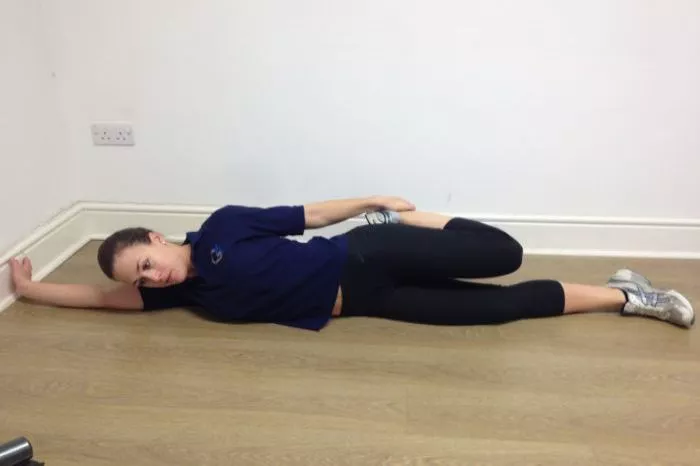Stretching the quadriceps femoris, a group of muscles located at the front of the thigh, is essential for maintaining flexibility, preventing injury, and improving overall mobility. Whether you’re an athlete, fitness enthusiast, or someone looking to alleviate tightness in the quadriceps, incorporating regular stretching exercises into your routine can offer numerous benefits. In this comprehensive guide, we’ll explore various stretches designed to target the quadriceps femoris, along with tips on proper technique, safety considerations, and the importance of flexibility training.
Understanding the Quadriceps Femoris
Before delving into specific stretching techniques, it’s important to understand the anatomy and function of the quadriceps femoris. This muscle group consists of four individual muscles: rectus femoris, vastus lateralis, vastus medialis, and vastus intermedius. Together, these muscles work to extend the knee and flex the hip, playing a crucial role in movements such as walking, running, jumping, and squatting.
Benefits of Quadriceps Stretching
Stretching the quadriceps offers a wide range of benefits, including:
- Improved Flexibility: Regular stretching helps increase the flexibility and range of motion in the quadriceps, allowing for greater freedom of movement in everyday activities and athletic performance.
- Injury Prevention: Tight quadriceps muscles can contribute to imbalances and biomechanical issues, increasing the risk of injury, such as strains, sprains, and overuse injuries. Stretching helps alleviate tightness and reduce the likelihood of injury.
- Enhanced Athletic Performance: Flexible quadriceps muscles are essential for optimal athletic performance, whether you’re sprinting, jumping, or performing agility drills. By improving flexibility, you can enhance your speed, power, and agility on the field or in the gym.
- Alleviation of Discomfort: Tight quadriceps can cause discomfort and tension in the front of the thigh and knee area. Stretching helps alleviate tightness and may provide relief from pain associated with conditions such as patellofemoral pain syndrome or quadriceps tendinitis.
Now, let’s explore some effective stretching exercises to target the quadriceps femoris:
1. Standing Quadriceps Stretch
- Stand tall with your feet hip-width apart and your knees slightly bent.
- Shift your weight onto your left foot and bend your right knee, bringing your right heel toward your buttocks.
- Reach back with your right hand and grasp your right ankle or shin.
- Gently pull your right heel toward your buttocks until you feel a stretch in the front of your right thigh.
- Keep your knees close together and your torso upright.
- Hold the stretch for 20-30 seconds, then switch sides and repeat.
- Perform 2-3 repetitions on each leg.
2. Seated Quadriceps Stretch
- Sit on the floor with your legs extended in front of you.
- Bend your right knee and place the sole of your right foot on the floor.
- Keep your left leg extended and your left foot flexed.
- Place your hands on the floor behind you for support.
- Slowly lean back and shift your weight onto your hands as you lift your left leg off the floor.
- Reach back with your left hand and grasp your left ankle or shin.
- Gently pull your left heel toward your buttocks until you feel a stretch in the front of your left thigh.
- Keep your chest lifted and your shoulders relaxed.
- Hold the stretch for 20-30 seconds, then switch sides and repeat.
- Perform 2-3 repetitions on each leg.
3. Lying Quadriceps Stretch
- Lie on your right side with your legs stacked on top of each other.
- Bend your left knee and reach back with your left hand to grasp your left ankle or shin.
- Gently pull your left heel toward your buttocks until you feel a stretch in the front of your left thigh.
- Keep your knees close together and your hips stacked.
- Rest your head on your right arm for support.
- Hold the stretch for 20-30 seconds, then switch sides and repeat.
- Perform 2-3 repetitions on each leg.
4. Standing Quad Stretch with Wall Support
- Stand facing a wall or sturdy surface for support.
- Place your left hand against the wall for balance.
- Bend your right knee and bring your right heel toward your buttocks.
- Reach back with your right hand and grasp your right ankle or shin.
- Gently pull your right heel toward your buttocks until you feel a stretch in the front of your right thigh.
- Keep your knees close together and your torso upright.
- Hold the stretch for 20-30 seconds, then switch sides and repeat.
- Perform 2-3 repetitions on each leg.
Tips for Safe and Effective Quadriceps Stretching
- Warm Up: Before performing quadriceps stretches, it’s essential to warm up your muscles with light aerobic activity or dynamic stretching exercises.
- Hold the Stretch: Hold each stretch for 20-30 seconds to allow the muscles to relax and lengthen gradually.
- Avoid Bouncing: Avoid bouncing or jerking movements while stretching, as this can increase the risk of injury.
- Modify as Needed: If you have difficulty reaching your ankle or experience discomfort during a stretch, use a strap or towel to assist with the movement.
- Listen to Your Body: Pay attention to how your body feels during stretching. If you experience pain or discomfort beyond a gentle stretch, ease off the stretch immediately.
- Incorporate Regular Stretching: To maintain flexibility and prevent tightness in the quadriceps, incorporate stretching exercises into your daily routine or workout regimen.
In conclusion, stretching the quadriceps femoris is essential for maintaining flexibility, preventing injury, and enhancing overall mobility. By incorporating the aforementioned stretching exercises into your routine and following proper technique and safety guidelines, you can effectively target the quadriceps muscles and enjoy the benefits of improved flexibility and reduced muscle tightness. Remember to listen to your body, progress gradually, and consult with a healthcare professional if you have any underlying medical conditions or concerns before beginning a stretching program.
https://www.gtehy.com/archives/28503


